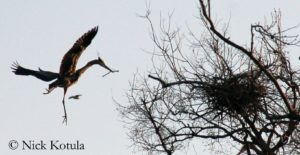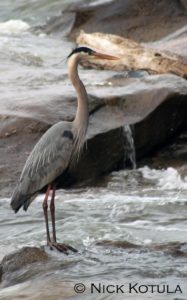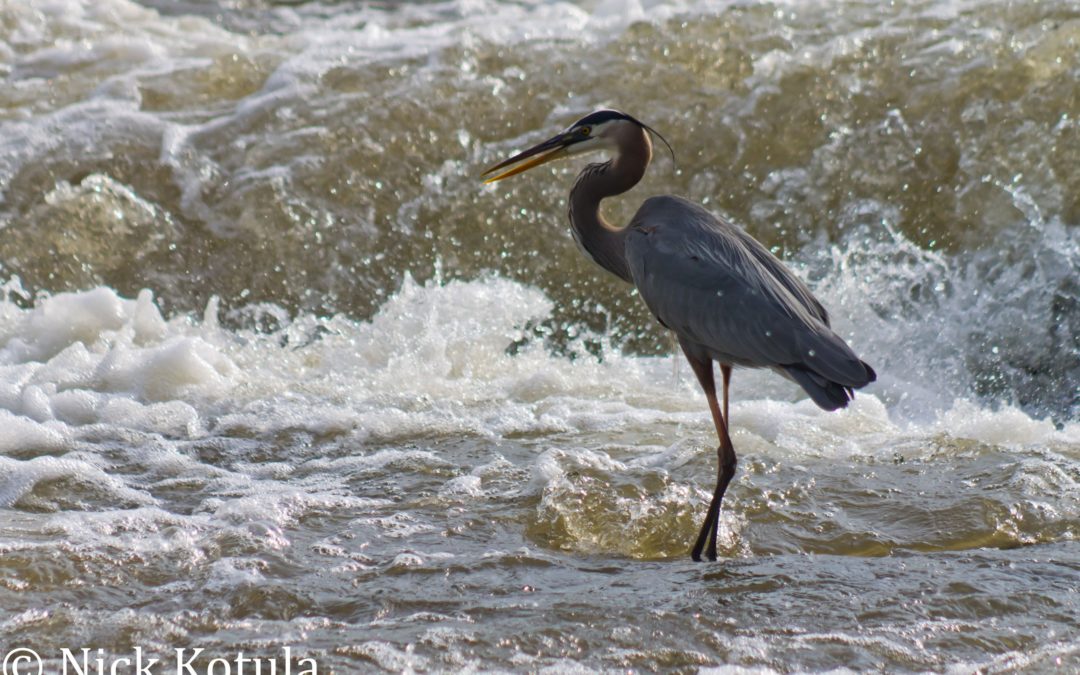Go anywhere on the James River and you stand a fair chance of spotting a Great Blue Heron (Ardea herodias). Indeed, the heron’s commonness might beget boredom were it not for the bird’s fascinating habits and unusual grace. Awaiting its next minnow-meal, the great blue heron embodies stillness and patience. The same bird, however, can scare you well enough to flip your kayak when it leaps into flight with its characteristic ear-splitting squawk right next to you.
Late winter is an exciting time for herons and heron watchers, for it is now that heron begin the work of creating the future of  their species. The heron stands over four feet tall with a six foot wingspan, so it needs a large nest for its young. The nest is finished by both parents in anticipation of 3-5 eggs that will hatch after four weeks of incubation.
their species. The heron stands over four feet tall with a six foot wingspan, so it needs a large nest for its young. The nest is finished by both parents in anticipation of 3-5 eggs that will hatch after four weeks of incubation.
This large construction project, the courtship rituals, and the efforts of the parent pair to feed their brood would be a spectacular sight if you were viewing only one family. But herons often raise their young in rookeries, building nests together in groups of several dozen or more. Though herons don’t live in flocks the rest of the year, they come together to raise young for better protection from predators like raccoons. This concentration of large birds is quite astounding; large trees supporting the rookeries are often killed by the sheer bulk and acidity of the droppings from the rapidly growing chicks.
 Despite the ruckus and pomp of the rookery, the great blue heron comes first to my mind as the solitary hunter standing
Despite the ruckus and pomp of the rookery, the great blue heron comes first to my mind as the solitary hunter standing
motionless on some deserted reach of river, undisturbed by my passage. On long trips down the James, I have noted the gray forms like mile markers ticking off the distance between the mountains and the Bay. If I am lonely for company, I will not be for long, for there is always a heron waiting around the next bend. The heron’s ability to inspire awe and call poetry from the heaviest of hearts, as well as its prevalent distribution, perhaps make this bird the true guardian of the James. If enough young people are given a chance to appreciate the great blue heron, the river will be in much better hands in years to come.
More information:
Audubon Guide to North American Birds

